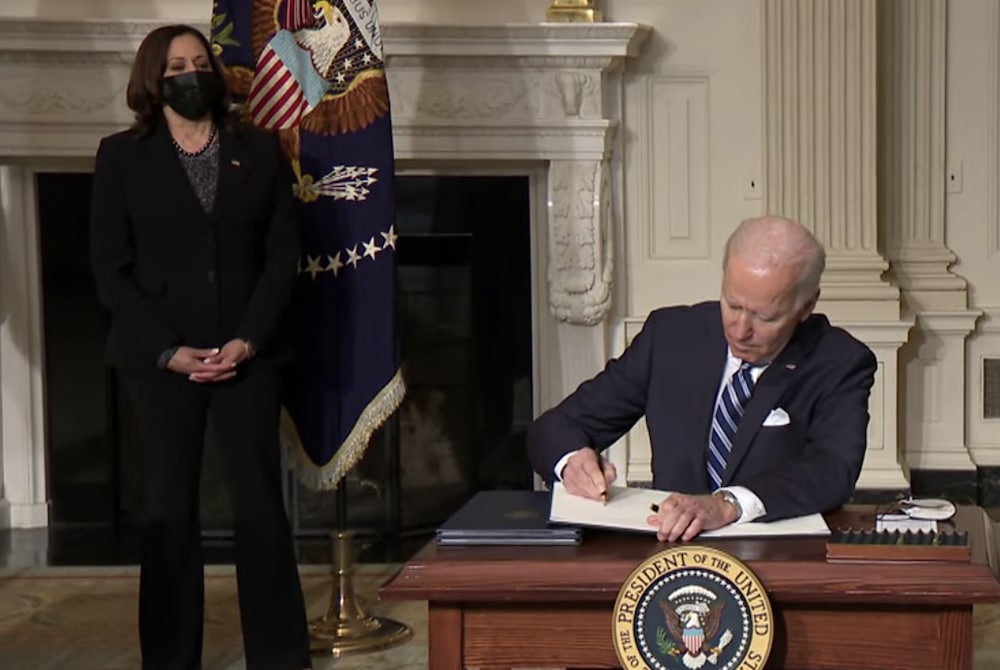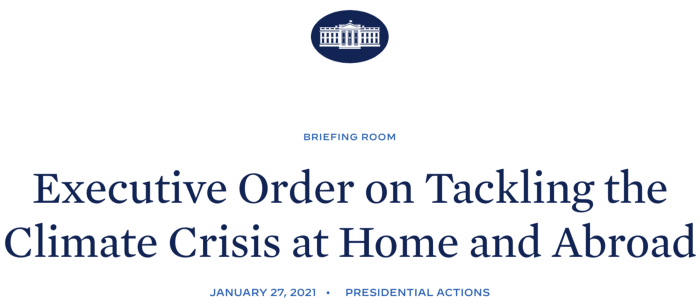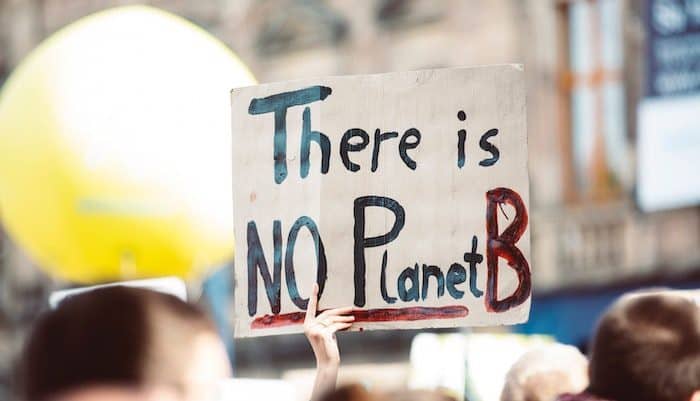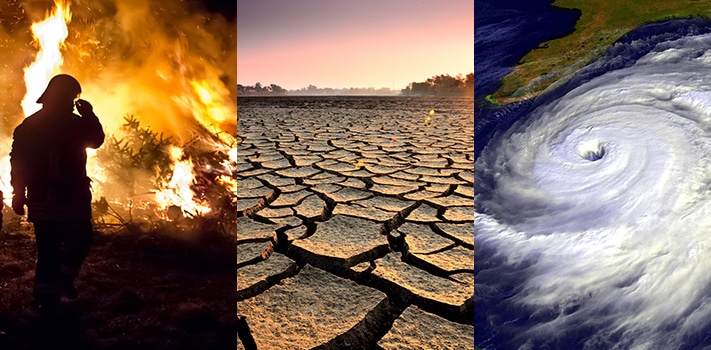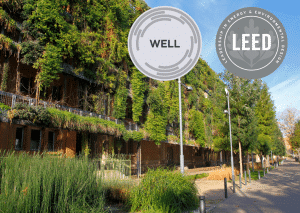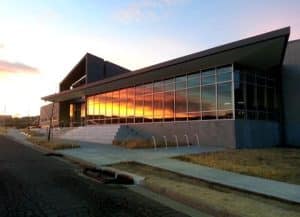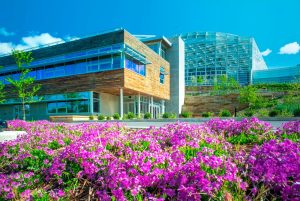How the Government Is Revitalizing Energy Communities and Tackling the Climate Crisis – Is It Enough?
It’s no secret that President Biden has major plans to address climate change and support greener energy. However, he’s also made it clear that he understands that many communities in the U.S. depend on older energy forms, like coal, to provide employment and fuel the local economy. Prior to signing Executive Order 14008, “Tackling the Climate Crisis at Home and Abroad,” Biden said “We’re never going to forget the men and women who dug the coal and built the nation. We’re going to do right by them and make sure they have opportunities to keep building the nation in their own communities and getting paid well for it.” (Initial Report to the President on Empowering Workers Through Revitalizing Energy Communities 2021)
Updates on the efforts following the Executive Order have been released in the Initial Report to the President, with insights on what action has already been taken, what goals and have been set, and how stakeholders have been included. Though some first steps have been made, the report makes it clear that we still have a long way to go.
Executive Order 14008: Tackling the Climate Crisis at Home and Abroad
The executive order is set to provide leadership as government agencies partner with coal, gas, oil, and power plant communities to provide jobs and stimulate the economy. Together, they’ll work to create union jobs that pay well and support energy workers. It’s incredibly important to the American people that President Biden focuses his attention in this area, as many workers in these communities feel that a shift toward cleaner energy would leave them forgotten and without jobs.
However, it’s also imperative for our environment and the fight against climate change that the actions we take work to remediate environmental degradation. The Biden Administration is attempting to address our environment by funding jobs – some of which would involve the clean up of abandoned energy industry sites, as well as retrofitting power plants with carbon-capture technology. By putting all of these pieces in play, the Biden administration aims to revitalize the economy in priority communities, as well as in the country. In this way, the Executive Order focuses on three key issues: empowering communities by creating jobs, employing people to remedy environmental damage, and uplifting the economy by investing money in these key areas. (Initial Report to the President on Empowering Workers Through Revitalizing Energy Communities 2021)
How Will We Accomplish This?
The first step towards accomplishing the lofty goals outlined in the Executive Order was to form an action team and for that team to outline a strategic plan. The Interagency Working Group on Coal and Power Plant Communities and Economic Revitalization was established, with the following agencies involved:
- Department of Treasury
- Department of the Interior
- Department of Agriculture
- Department of Commerce
- Department of Labor
- Department of Health and Human Services
- Department of Transportation (DoT)
- Department of Energy (DoE)
- Department of Education
- Environmental Protection Agency
- Office of Management and Budget/Domestic Policy Council
- Appalachian Regional Commission
The Working Group set out to prepare the Initial Report, which would describe the mechanisms available that would make it possible to accomplish the goals of the Executive Order. These mechanisms would prioritize using federal loan programs, grantmaking, financing, technical assistance, procurement, and other existing programs as a means to support, strengthen, and reinvigorate coal and power plant communities.
To start, the Working Group had to identify which communities needed the support of these mechanisms most, outline a plan with short-term and long-term goals, and proclaim a set of guiding principles.
Communities
The Interagency Working Group reviewed regions most dependent on fossil fuels for their income and economy, and identified 25 priority geographies to start with. The priority areas are those most affected by the decline of the coal industry. In many of these areas, the community has already been affected by coal plant closures and will likely be affected by future closures and continued decline in coal production and consumption.
We are already seeing the impact of these changes in other cities, particularly in Appalachian communities. Boone County, West Virginia saw an 80% drop in coal mining and employment from 2008 to 2016. A steep drop, especially considering that coal mining employed 50% of the county prior to the drop in 2008. Communities like this are the first to be targeted by the Working Group.
Although the Executive Order will work to help all traditional energy source communities (coal, oil, gas, and power plants,) the Working Group has recommended that the coal communities be the focal point of initial efforts. We expect to see coal production and consumption continue to rapidly decline, keeping with its current downward trajectory. The communities that depend on coal have been in need of help for some time and will continue to need support. For example, 175,000 people were employed in coal mining in 1985. That number dropped to 40,000 by 2020. Coal production numbers match the decline in employment. These changes are sparked by the push for other energy sources, like natural gas, and increased automation in the industry. Coal plants are also aging, with most coal plants at 35 to 55 years of age. We’ve retired 142 generators and entire plants since 2009, and we can expect 69 more plants to retire by 2025.
Other cities, Sheridan, Wyoming, are under consideration but will have to wait. Though they are a small city with a population of 17,844, the city is one of the top producers of traditional energy resources in the country. The city’s mining, oil, and gas-related jobs account for 42% of the city’s economic activity – in 2020 that was just over $4 billion. As we shift toward clean energy, communities like Sheridan will be hurt the most. After coal communities are addressed, cities like Sheridan, who depend on traditional energy for employment, will be next in line.
Additionally, the Working Group has identified six fossil energy-centric corridors with especially active fossil energy jobs and activities, which should also be addressed in years to come. These corridors are:
- Northern Rocky Mountain
- Mid-Continental Gulf Coast
- Appalachian Region
- Illinois Basic
- Alaska
- Four Corners (northeast Arizona, northwest New Mexico, eastern Utah, western Colorado)
The Initial Report also acknowledges the importance of serving fenceline and tribal communities that are disproportionately affected by our energy infrastructure. Fenceline communities are those that are near industrial facilities and are often communities of color. These communities are exposed to the environmental impacts and pollution from the industry but don’t get the value of industrial employment. Tribal land makes up 2% of U.S. land but contains 5% of all renewable energy sources. The Working Group must ensure that these communities receive federal investment that supports and accelerates the move to clean energy in an equitable and respectable way.
Funding Mechanisms
A total of $37.9 billion in existing federal funding has been identified by the Working Group. This funding comes from many of the agencies involved in the group and can be utilized by the identified energy communities. This funding should be used to support environmental remediation, infrastructure, community revitalization, and union job creation.
Goal Setting
Goals for the Executive Order are broken into immediate action, near-term, and long-term. In this way, the Working Group can kick off action that is needed to assist communities that have been in distress for a long period of time prior to the Executive Order, like coal communities. Near-term and long-term goals are set in place to keep the group on track for years to come, and so they can review and adjust as time passes.
Guiding Principles
Finally, the Working Group identified six guiding principles to lead their decision-making process as they make short and long-term goals.
- Create good-paying jobs
- Provide federal investment to catalyze economic revitalization
- Support energy workers by securing benefits and providing opportunity
- Prioritize pollution mitigation and remediation
- Adopt a government-wide approach
- Formalize stakeholder engagement efforts
Building Good-Paying Union Jobs
By creating good-paying jobs, the Working Group can effectively support traditional energy communities as the country transitions to cleaner energy forms. These communities have often been promised support in the past that never came, so many of them need immediate support. Closures of mines and power plants mean the loss of many good-paying jobs, and this is one way we can create big change in the near term.
These new jobs will be in critical infrastructure areas like water, roads, and broadband. With these investments, energy communities that are suffering today have the potential to become advanced energy hubs with economies to match. Retrofitting traditional energy and industrial facilities with carbon capture technologies and constructing and maintaining new renewable energy generation facilities will reinstate these communities’ economies, fueled by jobs.
The Working Group has also identified that the option to join a union provides the opportunity to secure benefits. Good-paying jobs are not simply enough. Workers in power plants and mining communities drove the economic growth of the industrial revolution, but then faced the most hardship as America transitioned into various technological changes and new trade policies. These communities have struggled for years with the changing economy and are still struggling as we grapple with climate change, economic collapse, and the pandemic. (Initial Report to the President on Empowering Workers Through Revitalizing Energy Communities 2021)
Funding to support the creation of good-paying jobs comes from many agencies and programs, including:
- Department of Commerce’s Economic Development Administration (EDA) supports the Assistance to Coal Communities (ACC) program, which offers grants to coal communities to pay for infrastructure projects such as roads, technology facilities, broadband, brownfield redevelopment, and more. The EDA received $33.5 million for the ACC initiative in fiscal 2021 to support these projects, along with another $3 billion through the American Rescue Plan to support communities whose economies are suffering due to the pandemic.
- $1.585 billion in grant programs to go towards providing access to rural broadband, especially for tribal communities, minority communities, and households who do not have access to broadband speeds of at least 25/3MBps. This is under the DEC’s National Telecommunications and Information Administration (NITA.)
- $1 billion in competitive grant funding is available through the Rebuilding American Infrastructure with Sustainability and Equity (RAISE) program from the DOT. This program provides capital funding for multi-modal and multi-jurisdictional projects. The DOT has committed to prioritizing projects that reduce climate change and create good-paying jobs, which will allow them to focus on energy communities in need.
Remediating Environmental Degradation
In 2019, 23% of greenhouse gases (GHG) came from industry, with the majority of those emissions resulting from burning fossil fuels. Additionally, 25% of GHG came from electricity, and 62% of our electricity comes from fossil fuels like coal and natural gas. (Sources of Greenhouse Gas Emissions) For this reason, it’s imperative that the jobs created under this Executive Order prioritize our environment.
The Initial Report cites pollution mitigation and remediation as one of the Working Group’s guiding principles. Long after power plants and mines close, the energy community, fenceline communities, energy workers, and their families are all affected by the environmental and health effects of being near these industries. Abandoned traditional energy infrastructure continues to cause environmental degradation. The federal agencies must invest in remediation efforts, like reclaiming abandoned mine land, restoring brownland, and plugging leaking gas and oil wells. Of course, these actions can also create good-paying jobs and stimulate the economy. (Initial Report to the President on Empowering Workers Through Revitalizing Energy Communities 2021)
Funding for projects and jobs that would remediate environmental degradation comes from several government agencies, including:
- The DOE’s Loan Programs Office, which received $8.5 billion in 2005 for innovative technologies, such as technology that can capture greenhouse gas from traditional energy sources, like coal and gas. By using this funding for environmental remediation, we can retrofit industrial facilities and power plants with technology that can decarbonize their output.
- $75 million in funding from the DOE for the development of engineering design that would be installed in power plants and industrial facilities to capture and store carbon.
- $15 million in funding from the DOE to support geothermal research which aims to drive down the risk and cost associated with new geothermal resources for power production, heating, and cooling.
- $152.2 million the Department of the Interior’s Office of Surface Mining Reclamation and Enforcement (OSMRE.) This funding is available for Abandoned Mine Lands grants, which support the reclamation of abandoned coal mines.
- $4.2 million from the Bureau of Land Management to remediate orphan wells on public lands, with the goal of addressing 39 of the 102 wells accounted for.
- $967 million in loans for 2021 from the Rural Utilities Service Water and Environmental Programs (WEP) to finance the treatment of mine-impacted water.
- EPA Broadfields Program offers grants to help communities and states fund the environmental clean-up of brownfields.
Revitalizing the Economy
In addition to the economic stimulation from new jobs, the Working Group has established the need for federal investment in public and civic infrastructure. These investments are set in place with the goal of sparking new economic activity, building the wealth of the community, and offering services and amenities to the community. It’s important to note that energy communities have experienced years of disinvestment, so there is a great opportunity to update foundational infrastructure and amenities there. These changes will require a long-term, ongoing commitment from the federal government and investment from the public and local leaders. (Initial Report to the President on Empowering Workers Through Revitalizing Energy Communities 2021)
Funding for economic investment comes from several agencies, including:
- $55 million from the Appalachian Regional Commission, whose POWER Initiative offers grants that target Appalachian communities, many of which have suffered coal-related job and economic loss.
- The Department of Labor’s WORC grant initiative aims to finance economic development in rural communities by supporting workforce development and employment services.
- $10 billion from the American Rescue Plan for the State Small Business Credit Initiative which supports financial programs for economies at the tribal, territorial, and state levels.
Where Does This Leave Us?
The goals of the Executive Order are lofty and complex. It’s clear that the three target areas – jobs and communities, economy, and the environment – are all intermingled, and the efforts toward each will affect all other areas. In the Initial Report, the Working Group lays out a clear plan of action, with checks and balances to keep them on track. Within three months they will hold meetings with priority energy communities to gain community engagement. Within a year, they aim to have a one-stop-shop that energy communities can go to in order to access federal investments. The Working Group has also set a goal to strategize for a long-term policy to keep the momentum going for years to come. (Initial Report to the President on Empowering Workers Through Revitalizing Energy Communities 2021)
With that said, is the Biden administration doing enough for the environment? Biden’s plan focuses on creating jobs by renovating our dilapidated infrastructure – from roads to housing to broadband – and by updating the electrical transmission network to a modernized state. While these are important areas of focus, they may not be the most prudent use of our time and money. One study from 2017 found that investments in renewables can generate three times more jobs than the same size investments in fossil fuels. Additionally, we could stimulate 500,000 jobs each year through 2035 if we switched our grid to renewable sources. Rather than handing funding to oil and gas companies to plug their own orphan wells, we could create 120,000 new jobs to do the same thing. (Piven, 2021) Biden’s plan seems to focus on reactive clean-up efforts, rather than proactive steps to lower emissions. There are more environment-focused steps he could choose that would have the same result as the initiatives outlined in the jobs plan, and the same high numbers of job creation.
Additionally, his jobs plan will cost $2 trillion, but some people are pointing out that it’s not sectioning off enough funding to reverse climate change. For example, the BUILD GREEN Act, which is currently co-sponsored by Senator Elizabeth Warren, Representative Alexandria Ocasio-Cortez, and others, would invest $10 trillion toward galvanizing the transition of public transportation to all-electric power – is not considered too ambitious in terms of environmental progress (Piven, 2021) So why isn’t the President investing more money and taking a more active approach to climate change?
Now more than ever, we must take unwavering action.By 2030, we need to lower greenhouse gas emissions by 50% just to avoid the worst climate impacts (Levin et al., 2019) In less than seven years, we must have near-zero emissions in order to have a two-thirds chance of remaining under the critical threshold of 1.5 degrees Celcius warming. The Science
With that, said, Biden’s plan is a start. It’s a big step in the right direction, and the Initial Report shows that major action is being taken. Funding is being provided in key areas. This is more progress toward protecting our environment than we have seen in years, and it has buy-in from key supporters. We must continue to move in this positive direction and amp up our actions in order to effectively fight climate change.
Learning Hub @GBRIonline provides you access to 100s of sustainability, green building and LEED courses.
To learn more about click here in link for our course on How the Government Is Revitalizing Energy Communities and Tackling the Climate Crisis – Is It Enough?


